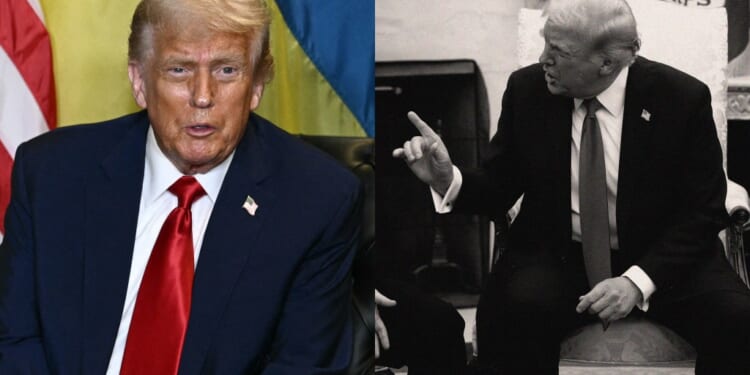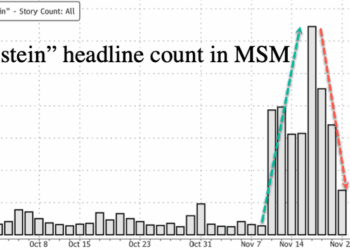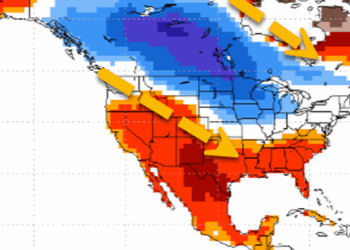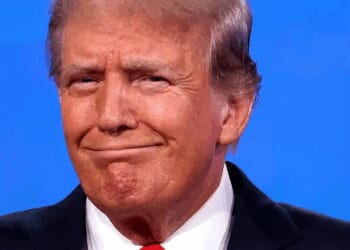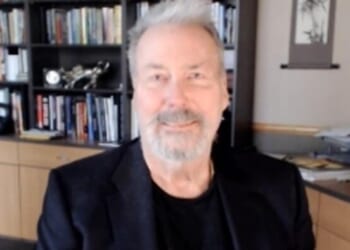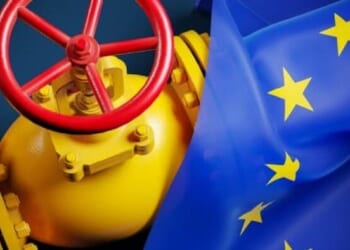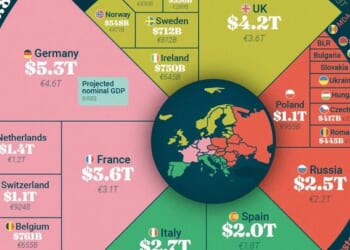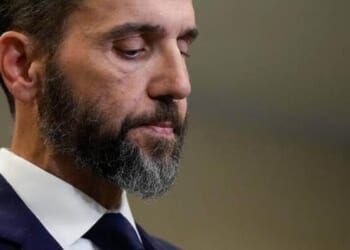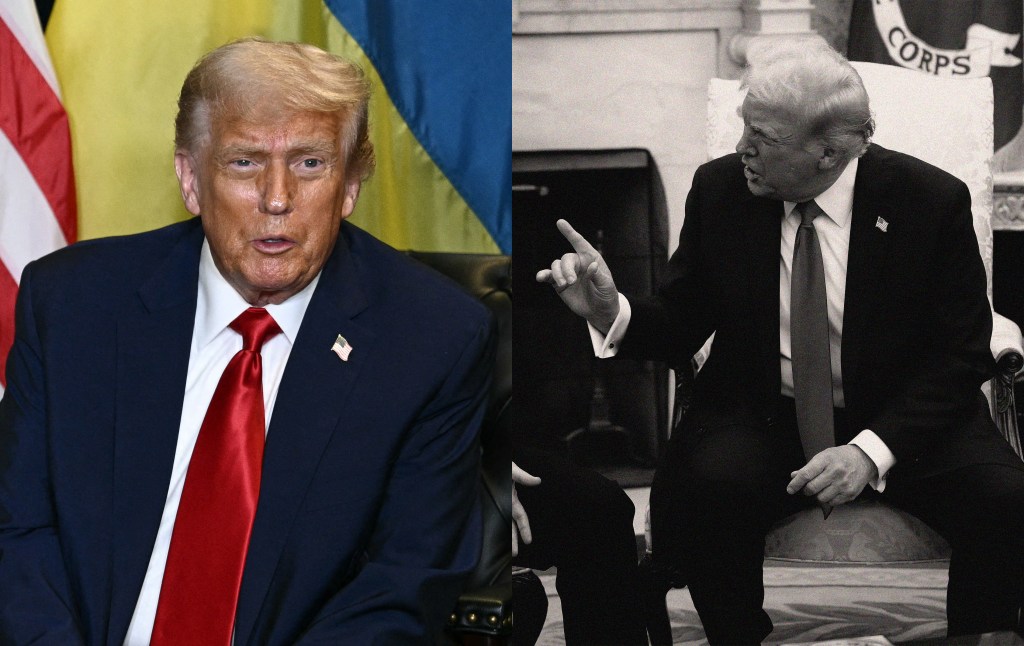
One of the most remarkable developments in the decade-plus of Russian military aggression against Ukraine happened this week in one of the unlikeliest places: Donald Trump’s proprietary social media service, Truth Social. On his account there, Trump went further than any sitting American president since Russia occupied and annexed Crimea in 2014 to express the simple idea that Ukraine can and should win the war.
“I think Ukraine, with the support of the European Union, is in a position to fight and WIN all of Ukraine back in its original form,” Trump posted Tuesday afternoon. “With time, patience, and the financial support of Europe and, in particular, NATO, the original Borders from where this War started, is very much an option. Why not?”
Trump’s statement went on to denigrate Russia as a “paper tiger,” called its military efforts “aimless,” and even suggested a victorious Ukraine might expand its territory, a goal the Ukrainians have never sought. (But points for enthusiasm!)
It’s been a long and strange journey since that disastrous Oval Office meeting in February, when Trump and his anti-Ukraine vice president berated Ukrainian President Volodymyr Zelensky with Russian talking points and upbraided the war-torn country’s president for his supposed ingratitude. Trump published his Tuesday post shortly after he met with Zelensky in New York, where both leaders were attending the United Nations General Assembly meeting. This mini-summit was the polar opposite of what happened in Washington months before, and Trump’s helpful words came as a surprise to Zelensky, the latter told Fox News anchor Bret Baier on air a few hours later.
“President Trump was more positive in it, and he showed that he wants to support Ukraine to the very end,” Zelensky told Baier. “I was very positive about signals from the side that Trump and America will be with us to the end of the war.”
Longtime Trump watchers have every reason to be cautious or even suspicious of how real this shift is, especially since the president has staffed his second administration, from J.D. Vance on down, with a number of people hostile to U.S. support for Ukraine. (Notably, Secretary of State Marco Rubio contradicted the spirit of Trump’s statement, saying on the same day in a U.N. Security Council meeting that the war “cannot end militarily.”) Trump has a well-documented penchant for making empty threats toward Russia and Vladimir Putin, and the incoherence of his worldview—he clearly admires Putin’s strongman approach but disdains the violence and killing under Putin’s direction—makes predicting his next move impossible.
“Trump’s specific views on Ukraine are hard to decipher, but he clearly does not automatically embrace the 80-year U.S. and allies’ view that aggression by states such as Russia in Eurasia endangers American interests,” says James Jeffrey, a career diplomat who served multiple presidents of both parties, including as Trump’s top envoy to Syria and later Iraq during the first term. “Complicating everything is his delight in off-the-cuff remarks such as his most recent on Ukraine regaining territory. No one knows why he utters such things or what the deeper policy or meaning is.”
But those who have advocated for more support for Ukraine see Trump’s post as a chance to encourage the president to back up these encouraging new words with positive action.
“We may wake up tomorrow and he is saying the exact opposite. But right now he’s saying what he’s saying. His message is being echoed and reiterated and repeated by senior officials and on social media,” says Luke Coffey, a senior fellow at the Hudson Institute, a conservative foreign-policy think tank. “We’ve now entered this window of opportunity to try to reshape the larger conversation about U.S. support to Ukraine and the future of U.S. relations.”
It’s hard to pinpoint what led Trump to this turnaround, but a handful of events and trends seem to have exhausted his patience with Putin, with whom he has long sought a diplomatic end. Last month’s summit with the Russian leader in Anchorage was heavy on the pomp and circumstance but light on the results. Since that meeting, Russia’s continued military provocations within the airspace of NATO allies like Poland, Estonia, and Denmark may be confirming to Trump what people like Zelensky and leaders of other European nations have been warning for years: Putin’s expansionist ambitions will not stop with Ukraine. Trump may be beginning to realize that Putin is stringing him along when it comes to negotiating for peace, standing in the way of his Nobel Peace Prize dreams in the process.
In this environment, Zelensky seems to be taking advantage of the diplomatic thaw with Trump by playing Trump’s game more smartly. His Oval Office meeting last month, where he was joined by other European leaders, was a relative charm offensive that left Trump expressing support for vague security guarantees—a step in the right direction as far as Ukraine is concerned. And at this week’s meeting in New York, Zelensky may have provided Trump with some details to convince the American president that Ukraine was on the cusp of a significant triumph on the battlefield.
“I’m very grateful to President Trump. I can’t share the details right now. Trump possesses very important information regarding the situation on the front line,” Zelensky told the Kyiv Post.
What that “important information” was isn’t clear, but it’s worth remembering that some of Ukraine’s biggest achievements have often happened in the months before Eastern European winter sets in. In August and September 2022, the Ukrainian Armed Forces launched a dual counteroffensive effort that by November had liberated the southern city of Kherson and wide swaths of the eastern parts of the country from Russian occupation. And two years later, in August 2024, Ukraine launched its surprise incursion into Russian territory in Kursk.
Could Zelensky and the Ukrainian military have something similar up their sleeves for this moment? Could the apparent weakness of Russia’s economy change the course of the war? Could the increased military spending by European NATO countries and heightened tensions with Russia change the calculus? Or could Russia be on the cusp of making significant battlefield advancements?
“I feel like we’re in a period of volatility,” Coffey says. “Where one unexpected spark, it can have a huge impact.”
And if there’s anything we know about Trump the showman, it’s that he seeks to be at the center of whatever drama is taking place. For once, perhaps that could work in Ukraine’s favor.

